Andreas Helgstrand is a controversial figure. There is no denying that he has an amazing eye for a horse, or that he has produced a string of top international performers from his global behemoth Helgstrand Dressage. but this must be balanced by Andreas’ over-the-top style of max everything in the ring, but as you will find from this insightful and thoughtful master class, he is well aware of ‘the principles’…
The Clinic was held was made a bit more tricky by the venue. A fairly scary tent affair, which flaps, no proper warm up facilities and an Equitana crowd that sort of grazes… they’ll sit for a while before the lure of yet another red hot shopping opportunity or the next load of fat saturated sugars causes them to drift. It’s a seriously spooky place to be for a youngster, and the first horse in, Gary Lung’s GB Winchester, is coping very well considering, and Andreas is re-assuring:
“It’s difficult when they are young and tense, it is important to take your time, he’s a bit excited and the first thing is to control him. Make a few transitions, get him listening, just play with him.”
When he does go to trot, the chestnut gelding wants to show off his big wonderful Weltmeyer trot, but Andreas wants balance:
“Don’t let him run, get him back in balance, walk a little – so we don’t have the feeling that the horse running away from your seat. Make sure the rider is riding the horse, not the horse riding the rider. Teach your horse to wait for you, if he is not waiting, you’ll never be able to go on to passage later.”
“Work him forward, work him back, getting him working over the back. Forward and stop, forward and stop, then they can get extension. If the horse is running all the time, they are on their front legs and will never make a nice extended trot. It’s the same in the canter, half halt, forward, half halt, forward from behind, get him to sit, play with him in front.”
Gitte Donvig’s Shiraz Black is the kind of horse that turns heads where-ever he goes, and the visitor was not immune to his flashy charms: “This is a very modern eye catching type, you always get a few extra points on a nice looking horse.”
The stallion is not impressed by the big screen at the end of the arena not recognising the other black stallion in the arena, and Gitte is working hard to keep him focussed. The pounding of the rain on the roof doesn’t help matters… I can’t help but thinking back a few weeks, where one of Andreas’ fellow Danish Olympic team medallists, Princess Nathalie, was giving the same horse and rider a lesson in the peace and quiet of a private indoor arena. It was so much easier for the Princess to accomplish more when the stallion calmed down after a couple of forward canters around the ring. I’m not sure how much this young horse can be expected to learn in such a stressful environment. Sure, they have to get used to atmosphere sooner or later, but this is a bit much.
Still Shiraz shows enough to earn the compliment: “He is a super, super mover, get such a horse strong and you have a top top horse.”
Next in, another exciting young import, the six year old gelding Worldstar and Kate Taylor-Wheat. For a change the instructor is asking for shorter not longer steps: “He’s very forward with big, big steps, now ask him for shorter steps. If he goes to Grand Prix he must collect and take shorter steps for the pirouettes and the piaffe.”
But shortening was followed by lengthening and vice versa: “He wants to shorten, ask him for a longer neck, more forward the nose, quicker behind.”
read on for lateral work
Time to show a little lateral work, shoulder in: “The outside leg controls the speed, the inside controls the bending. Now he is working, now he is dancing. He must go forward from your leg – one kick, then he has to relax again.”
And the canter, the half passes and the flying changes, had to keep the basic quality of the pace: “You must keep the rhythm in the canter. When riders start working on the movements, they forget their basic canter. In the changes, start to find the basic canter first, get the energy from behind. When the quality of the canter is better, the quality of the flying change is better.”
Some working pirouettes, quarters in on the circle: “We want the horse working and pushing from behind, we want a pirouette for a 9 not for a 6. Make the circle a little smaller, a little smaller, then out on the circle and get that basic canter back again.”
I suppose what keeps the audience enthralled is the opportunity to see such nice horses, well ridden… and – hopefully – grasp the message that fine dressage is made up of simple things done brilliantly.
Andreas is able to speak a little Danish to his next student. Claire Fullers spent a year in Denmark, and purchased her horse, Candi K there. The pair have been back in Australia for the past two years, long enough to be named on the Young Rider Squad.
“This is an eight-year-old horse, and from what I have seen over the past few days, I think he has huge potential. We have been working on Claire – not her horse – she’s young but I want her reacting faster. If the horse is behind your leg you have to react at that moment, and do something.”
By now we know that Andreas emphasises that the riders check that the horses go forward and come back…
The next horse was another Weltmeyer frozen semen product, Welt Hill, with Brett Parbery:
“Brett told me that this horse is a little tense, he has to relax. Walk / trot / walk / trot, play him down, just so we get him over the back. We try to get the horse with us, not against us. It’s important when the horse is tense that we are not pushing at the beginning, we need to get him listening or he will be more and more stressed.”
Sure enough, Brett’s confident and tactful riding is having the desired effect:
“This horse has such a nice swing and movement. You can play a lot with speed when a horse has a nice rhythm. You see the top riders, in half pass, it is as fast as possible – go, go, go. They almost ask for extended trot for the half pass, then the horses really have to get their legs across, it looks nice and it gets the marks.”
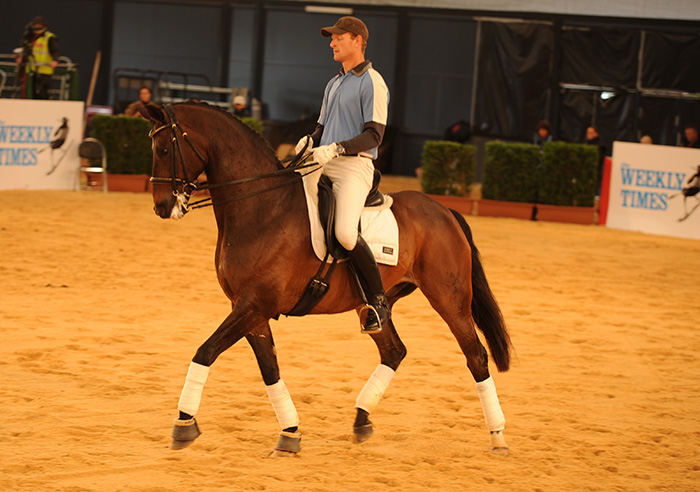
Brett was also warned to be careful with the extended trot:
“It’s very important not to do a whole diagonal or a whole long side in extended trot. Do two extended trots on each long side – and if he gets stiff in front remember it is not because he is stiff in front, it’s from the hind end. It’s important that the extended trot is on the hind legs – not running down hill.”
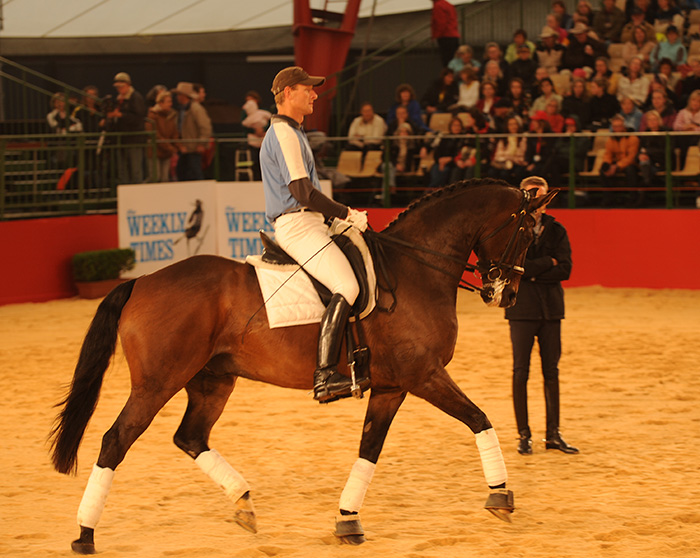
Sure enough the trot is suitably spectacular, expansive and unhurried, and the pair then show off their changes and pirouettes.
“The two times changes are very nice, you see the importance of taking your time instead of pushing the changes out…”

Andreas then has Brett demonstrate the first steps to one times changes:
“Just some one / twos on the long side. This is how we start the ones, just two at a time. One / two, when you can do this three or four times on the long side, you are very close to getting the ones. Don’t ever ask for too many ones, the horse gets stressed and next day, can’t do any changes at all. It’s important to take the changes slowly. It’s nice to see a calm rider like Brett, with him a tense horse gets relaxed.”
ADVERTISEMENT
Want to breed your own dressage star?
Choose a stallion from the wide range of European studs available through International Horse Breeders – stallions like Fürstenball, or Jovian…
Ring Glenis on 03 5439 7251 or click below
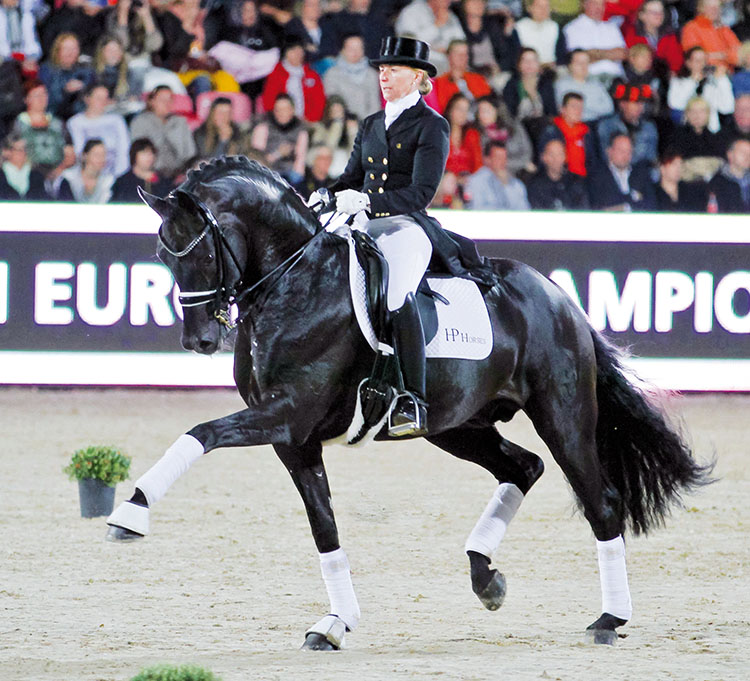
F¨ürstenball
Jovian

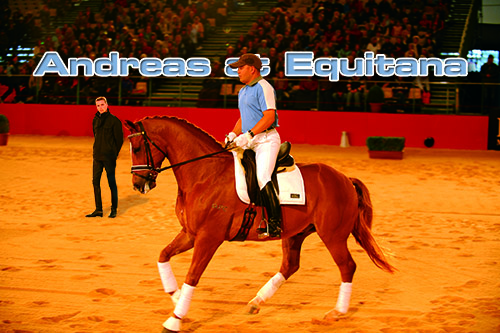
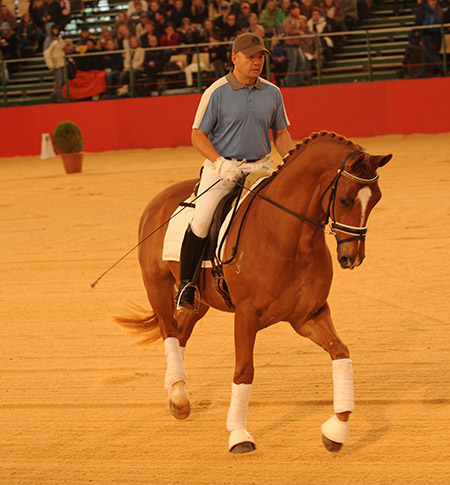
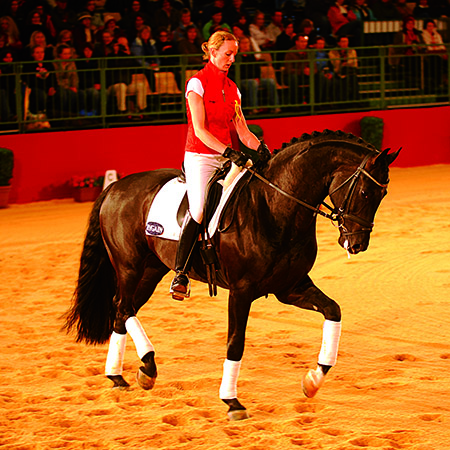
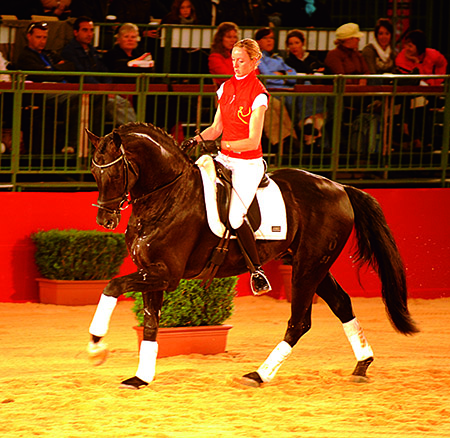
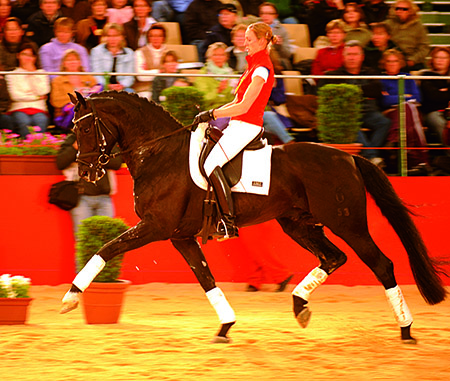
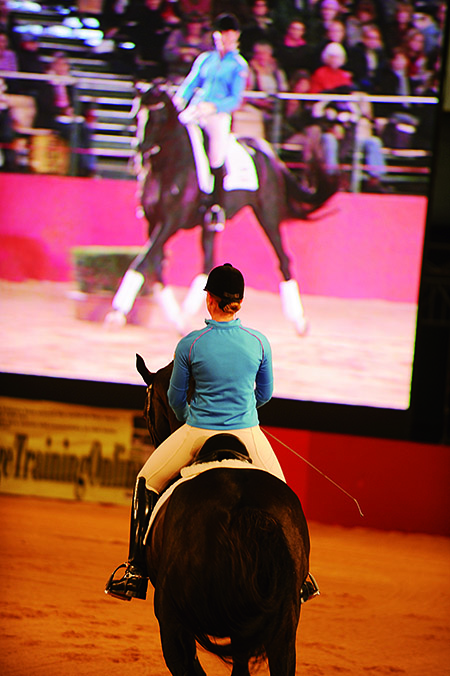
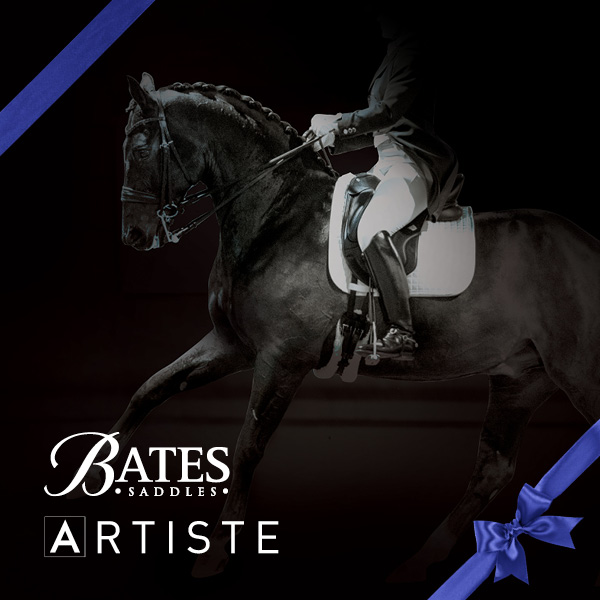
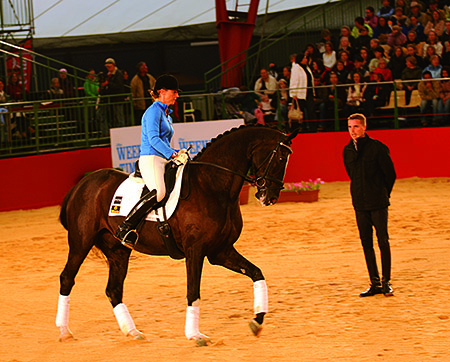

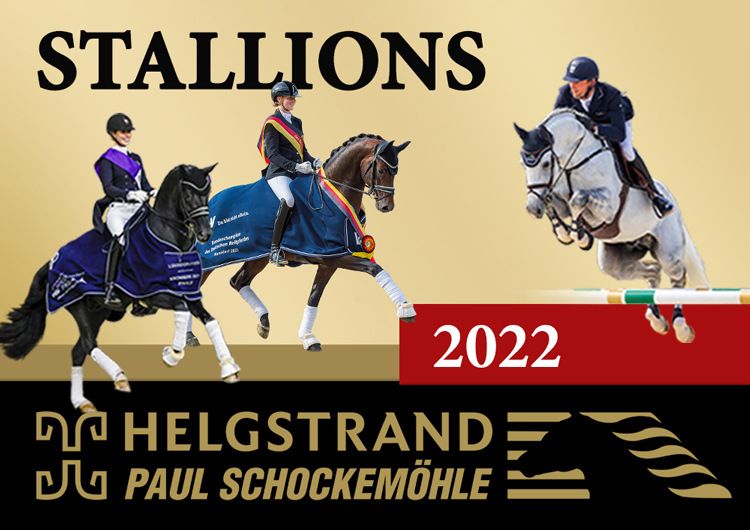
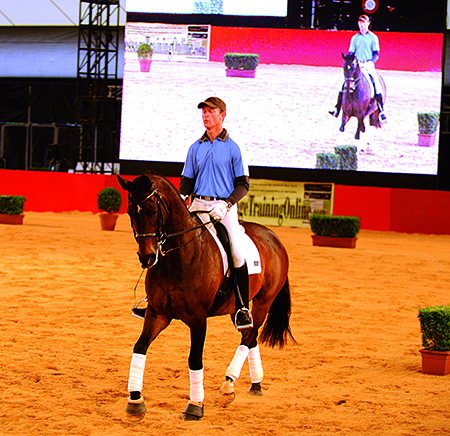
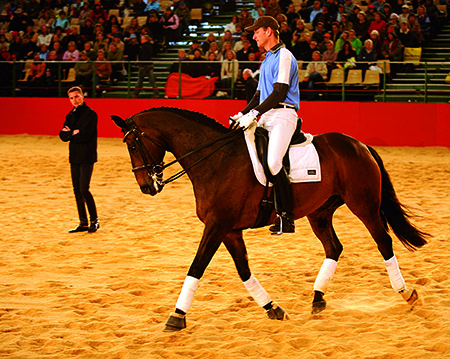
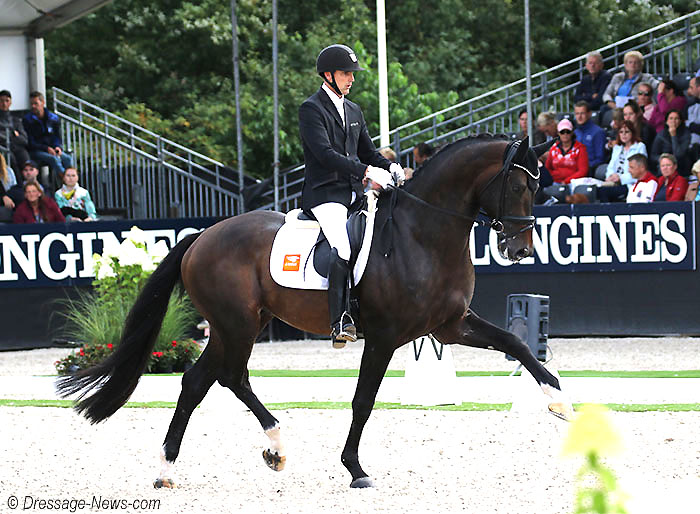
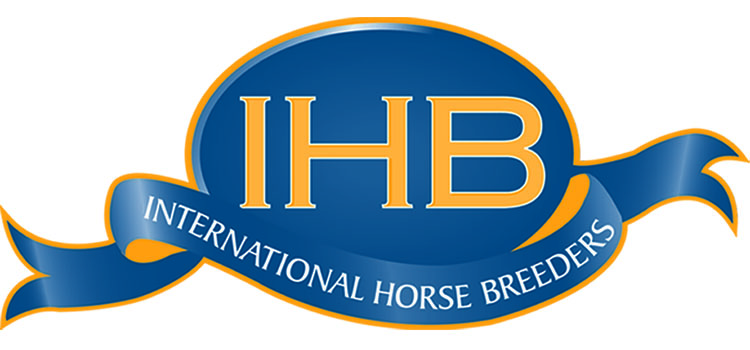
Cool